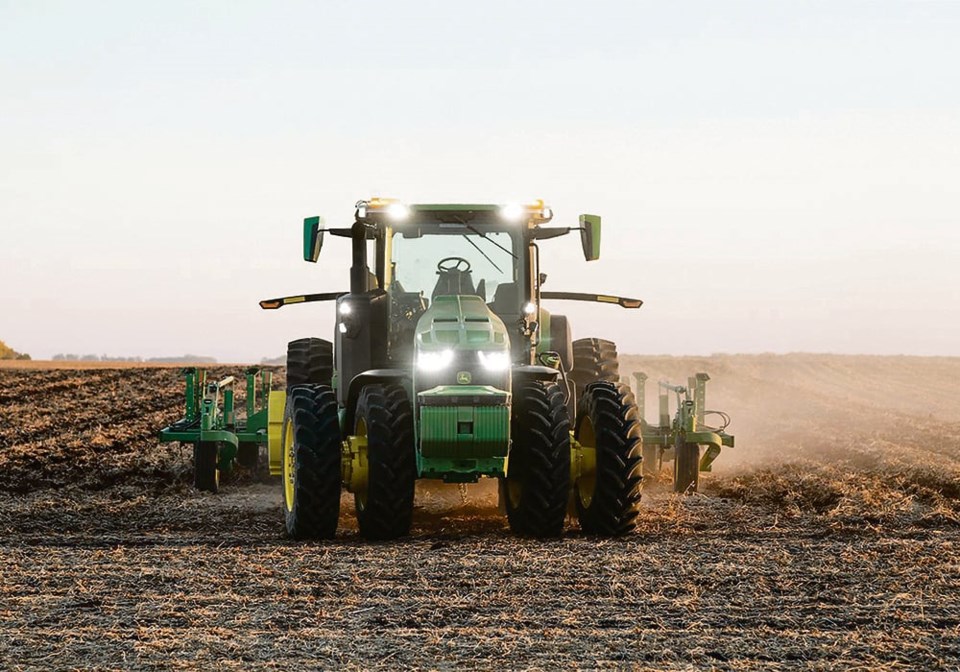WESTERN PRODUCER — Chuck Baresich, who owns an agricultural robotics business in Ontario, says controlling weeds with robots is probably best suited for high-value, horticultural crops in Canada.
However, large-scale grain farmers could also use the technology if they think about it differently.
“Let’s say my brother and me are growing 1,500 acres of corn,” said Baresich, who owns Haggerty AgRobotics and also operates Haggerty Creek Crop Inputs and Marketing in Bothwell, Ont.
“(So) why are we growing that corn instead of tomatoes instead of a higher value crop?”
The answer is labour.
He cannot find farm workers or afford to pay labourers to kill weeds and manage a high-value crop such as tomatoes.
As a result, Baresich and his brother grow corn because it’s manageable.
“The weed control options for the vegetable crop s… (it’s) too much labour and work,” said Baresich, who spoke at the Agriculture Enlightened conference held Oct. 26 in Winnipeg.
The host and organizer of the conference was EMILI, which is trying to help Canada become a leader in digital and precision agriculture.
“EMILI works with producers, industry and academia to advance the adoption of intelligent technologies and provide people with the skills and training required to succeed in a digital economy,” its website says.
Baresich spoke at the event and was joined on stage by Rick Rutherford, who operates Rutherford Farms north of Winnipeg.
Rutherford doubts that robotic equipment to spray weeds and perform other field tasks are useful on a 7,000-acre grain farm in Western Canada.
“We’re definitely not into robots yet,” he said.
“The return on something like that, today, in broad-scale agriculture isn’t there.”
Baresich agreed.
Putting a small robot into the field can’t compete with a large and efficient piece of equipment.
“Rick is correct. On a broad-scale (situation), labour is your lowest cost. So, removing the driver out of the sprayer doesn’t make any sense,” he said.
“If you’ve got a 60-foot seeder that can seed 400 acres per day, it’s hard to replace that with a robot. The ROI (return on investment) doesn’t work.”
However, getting back to his example of 1,500 acres of corn, Baresich said a robotic machine could change what a farmer grows.
Instead of seeding 1,500 acres of corn, Baresich could plant 1,400 acres of corn and 100 acres of onions or another high-value crop because the robot would do the work of a couple of paid employees.
This isn’t happening on his farm yet.
“We’re looking at it very closely,” he said.
“What we’re seeing in Ontario, we’re seeing a growth in the vegetable market and the higher-value crops.”
That sort of approach to robotic farm equipment could make sense in parts of Western Canada.
The region around Portage la Prairie, Man., for instance, is a major producer of carrots, onions and other vegetable crops. Maybe grain growers in the region could dedicate a portion of their acres to a higher-value crop if the robot was able to reduce labour and production costs.
This sort of innovation and adoption of technology could become more critical for Canadian farmers.
However, producers may be hesitant to take the risk and test it out on their farms.
That’s the benefit of groups like EMILI, which operates Innovation Farms on Rutherford’s land north of Winnipeg.
Innovation Farms is part of a network of similar farms across the country, called the Pan-Canadian Smart Farm Network.
At these locations, innovators and entrepreneurs can test and refine their agricultural technologies at scale or demonstrate the value of more established technologies.
These farms are critical because Canadian farmers want to see something that works under real world conditions.
“It’s fun to look at those things (new technologies like robots), but you’re not moving the needle by saying, ‘I did this on 200 sq. feet,’ ” Baresich said.
“You’re going to move the needle by saying, ‘I did this on 70 acres.’ “
Contact [email protected]
SASKTODAY.ca, Saskatchewan's home page, at this link.




